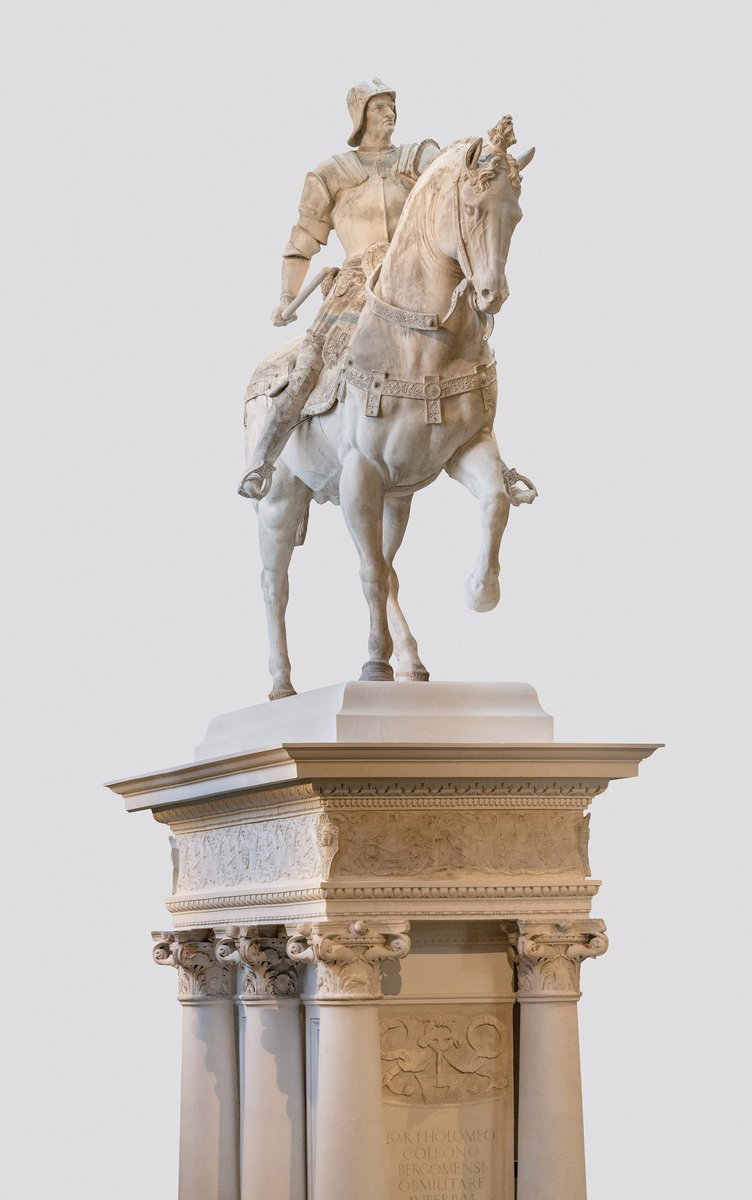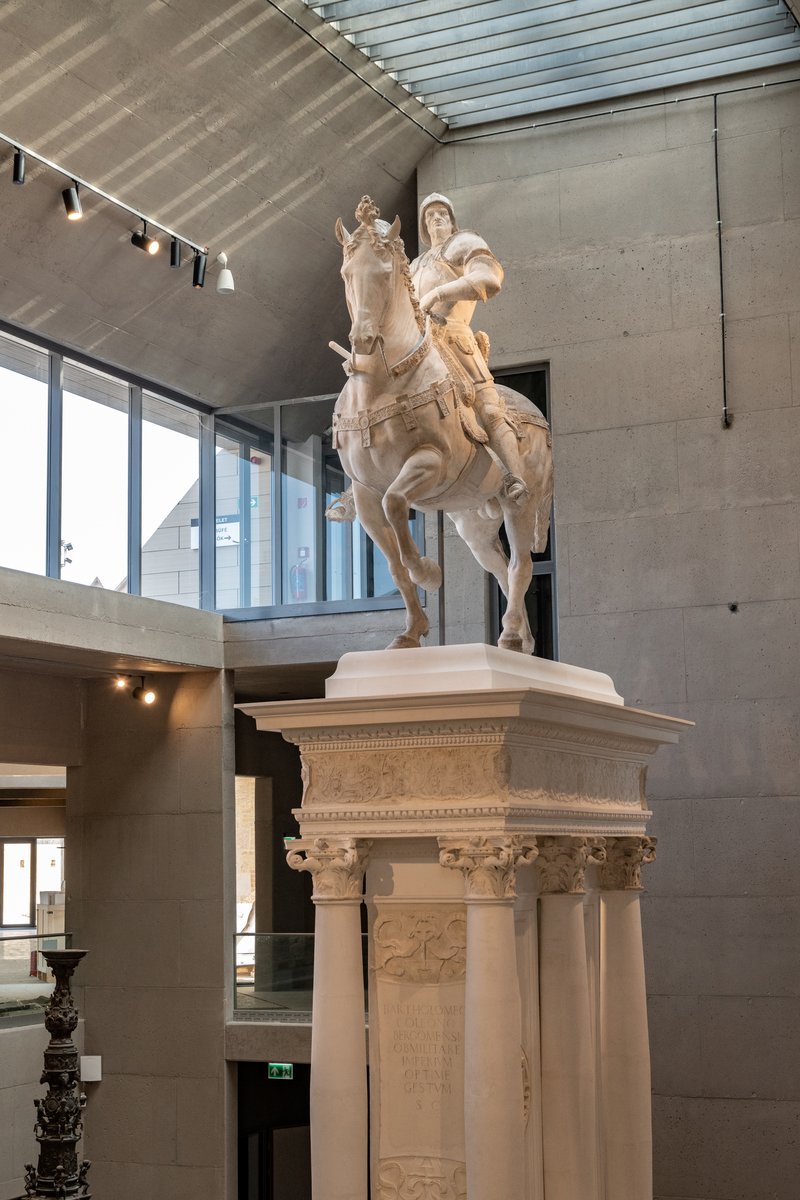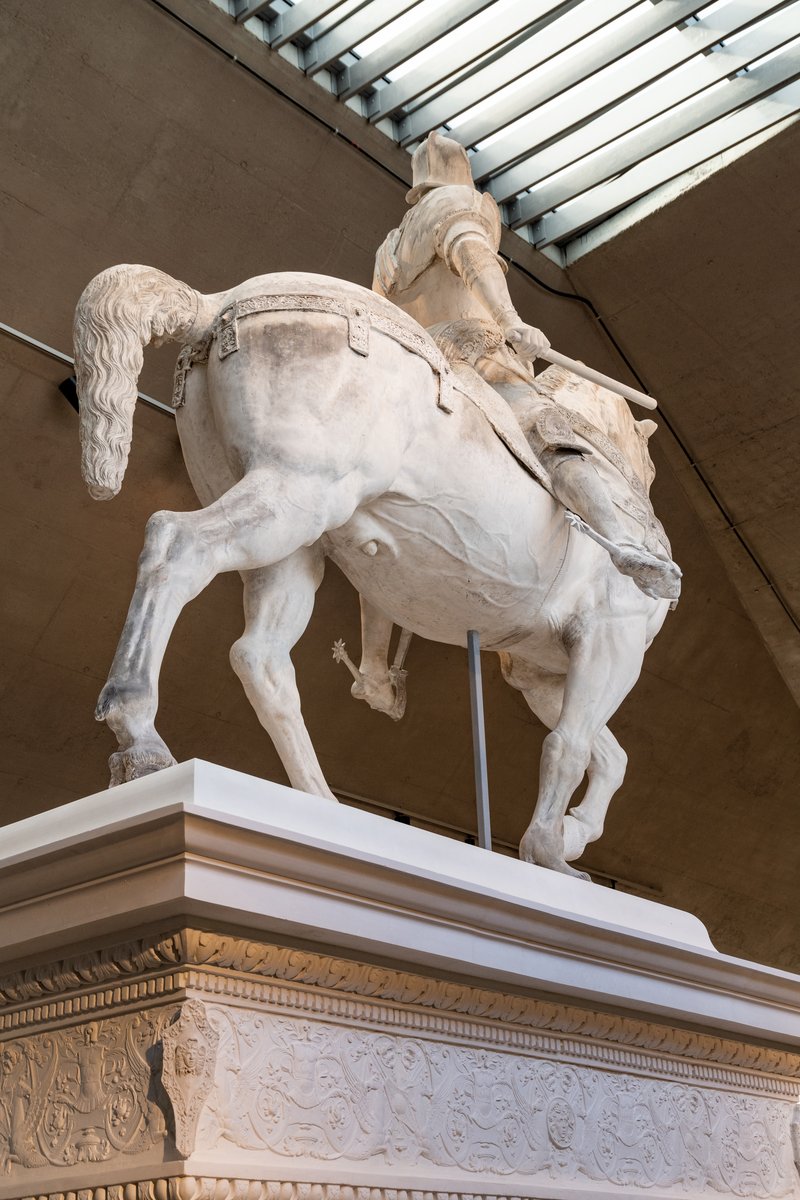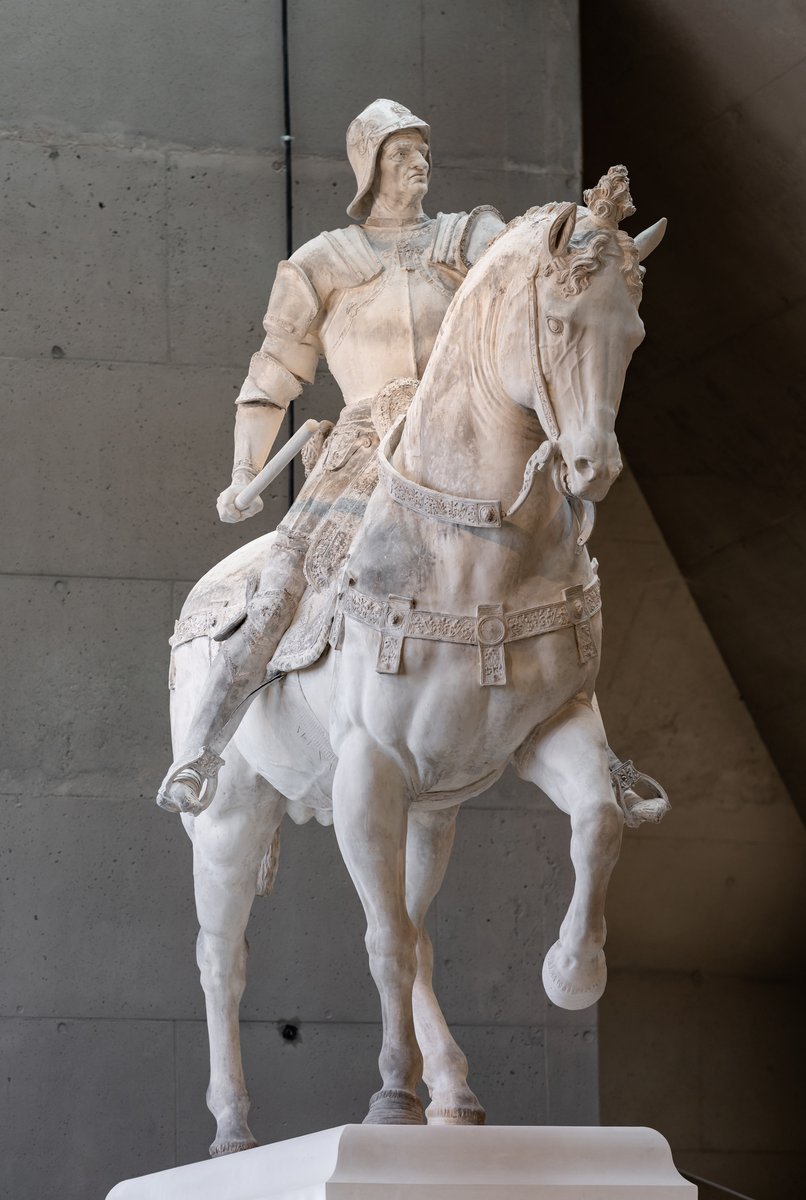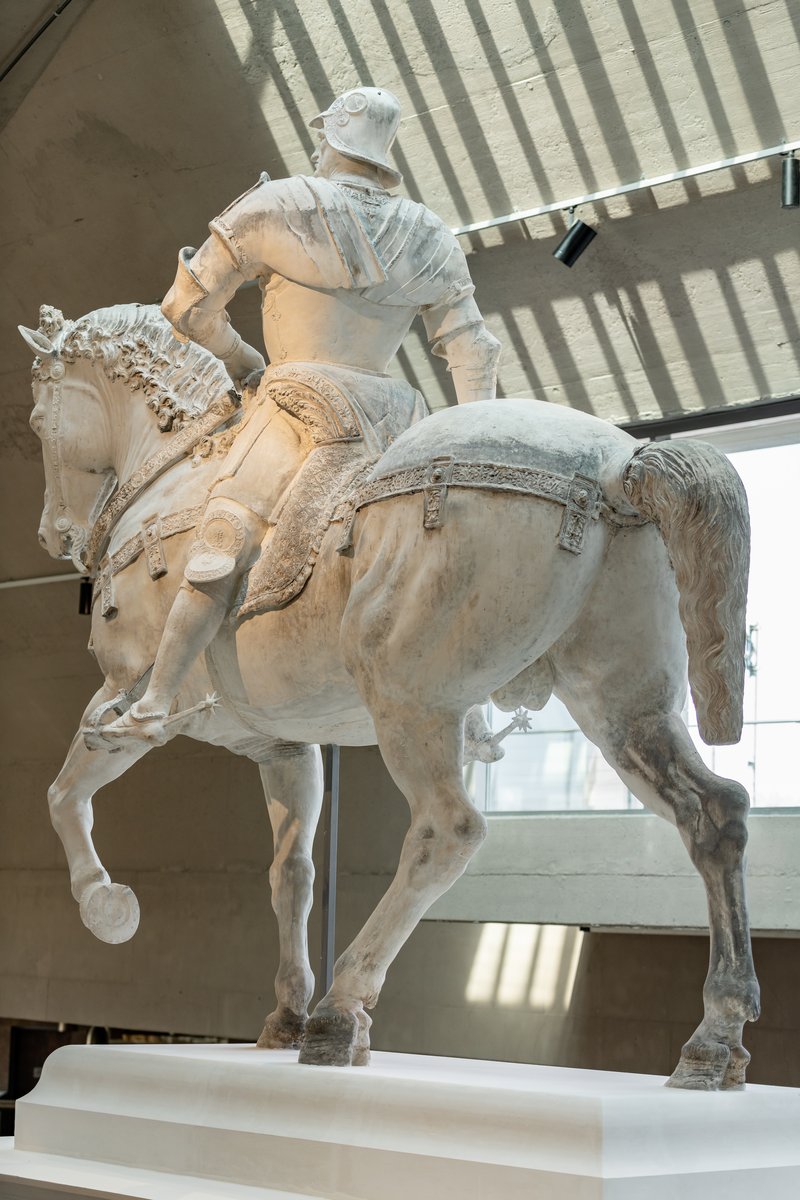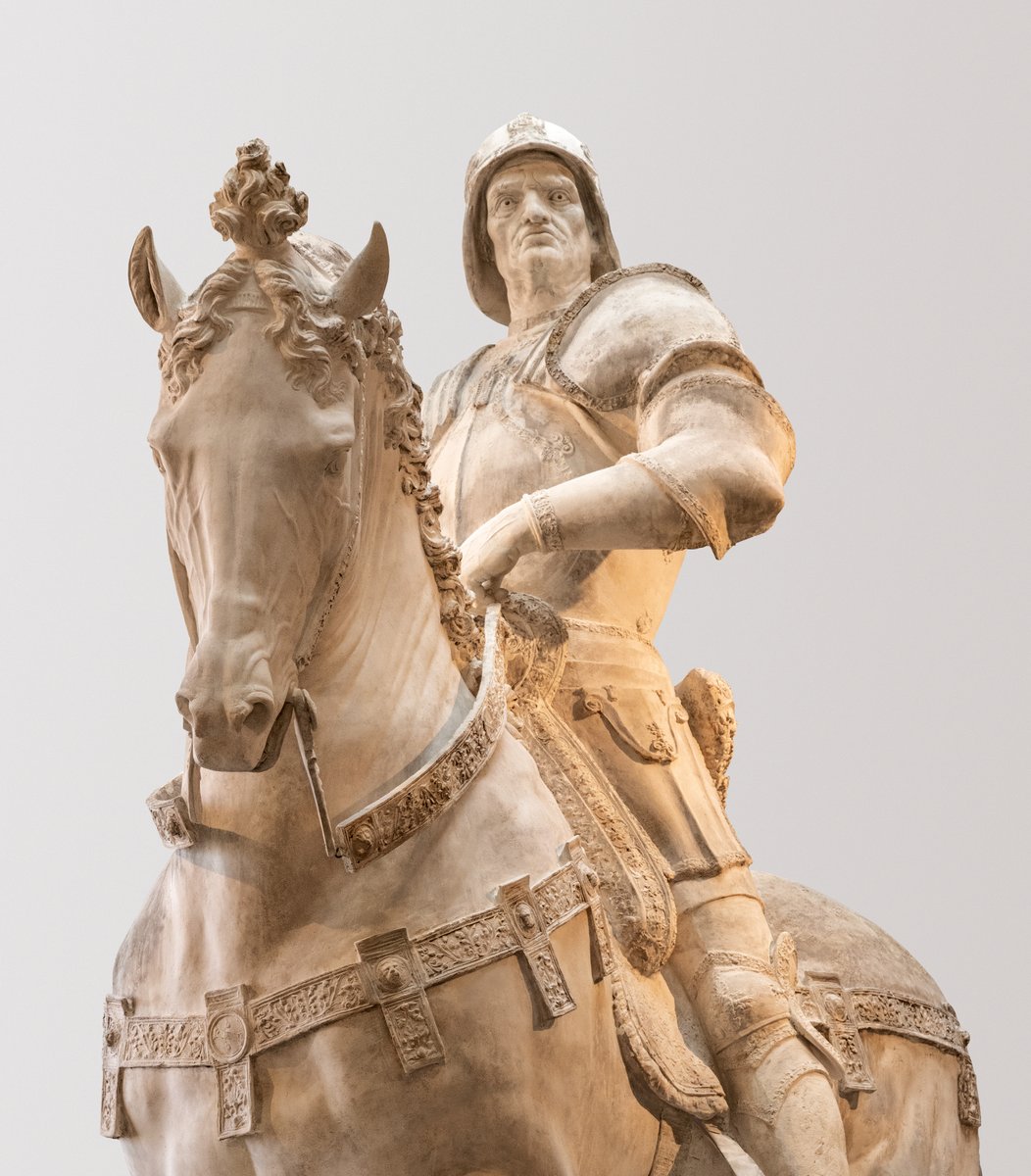Equestrian Statue of Bartolomeo Colleoni
Andrea del Verrocchio, Casting Workshop of the Kaiser-Friedrich-Museum (cast maker)- Artist
-
Andrea del Verrocchio
Florence, 1435 – Venice, 1488
Casting Workshop of the Kaiser-Friedrich-Museum
(cast maker)
Berlin, first half of the 20th century
- Dated
- 1479–1488 (original), 1906 (cast)
- Classification
- sculpture, plaster cast
- Medium
- plaster cast
- Dimensions
- 1100 × 315 × 496 cm
- Inv.no.
- Rg.227
- Department
- Sculptures - Plaster casts
- Current Location of the Original Artwork
- Italy, Venice, Campo Santi Giovanni e Paolo
From the late 1470s until his death, Andrea del Verrocchio focused on a single major project, namely designing and casting a bronze equestrian statue of Bartolomeo Colleoni (1400—1475), the Italian mercenary commander (Italian: condottiere). From 1455 until his death, Colleoni had served as captain-general of the Venetian armies. In his will, he had pledged a large financial sum to Venice on condition that his monument be erected in the Piazza San Marco. After Verrocchio’s death, a bronze statue was cast by Alessandro Leopardi, but it was ultimately placed on the Campo Santi Giovanni e Paolo in 1495. Verrocchio aimed to create a monument that outshone Donatello’s Gattamelata, the first Renaissance equestrian statue. In his monumental sculpture Verrocchio succeeded in raising the front left leg of the horse in the air. This unprecedented success gave the composition additional dynamism and vitality. Commissioned by the museum in 1906, cast at the Kaiser-Friedrich-Museum in Berlin (today Bode Museum). It was erected in 1908, in the Renaissance Hall.
